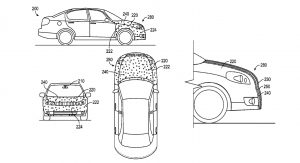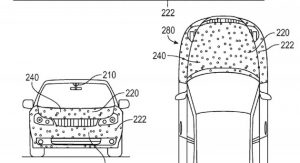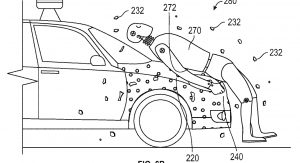The latest tech regarding pedestrian safety is almost here, as Google has patented the “adhesive vehicle front end for mitigation of secondary pedestrian impact”
Allow us to explain; according to the American multinational technology company, the system works by protecting a colliding object from a secondary impact (after an initial impact with a car), with the help of an adhesive layer positioned on the front end of the vehicle.
Basically, what Google is trying to say is that they put a double-sided duct tape on the front of the car so that the pedestrians could stick to the hood in case of an accident.
But this is no laughing matter, as Google says that due to a variety of reasons, collisions with another vehicle, object or person will inevitably happen, and that the current protective features installed into vehicles, designed to meet certain crashworthiness standards, do not provide significant protection for a pedestrian struck by a vehicle.
That’s why the company came up with the adhesive solution, that was described, in the actual patent, to be similar to flypaper:
“The adhesive layer may be a very sticky material and operate in a manner similar to flypaper, or double-sided duct tape.
The adhesion of the pedestrian to the vehicle may prevent the pedestrian from bouncing off the vehicle after the pedestrian impacts the hood. For example, by adhering the pedestrian that comes into contact with the front end, hood, and/or bumper, an example embodiment may prevent the pedestrian from bouncing forward off the front end, hood, and/or bumper, or being vaulted up and over the vehicle, thus helping to prevent injuries from a secondary impact with the road surface or other object that might otherwise occur.”
Moreover, the system won’t gather other debris as it will be protected from environmental factors by a thin coating applied over the adhesive layer. Described as an eggshell-like material, the coating will break away in the event of a pedestrian impact, revealing the adhesive layer below – which will bond with the pedestrian.






